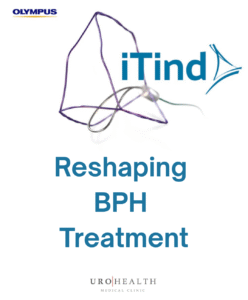My blood test shows a raised PSA level! Do I have prostate cancer?
As part of Prostate Cancer Awareness month, I would like to address some common but very important questions relating to prostate cancer. I hope that this will be useful for you.
What are the causes of an elevated PSA blood test?
Unfortunately, Prostate Specific Antigen (PSA) is not a sensitive blood test for detecting prostate cancer, because a number of benign conditions can result in elevation of PSA levels. These include:
- Prostate inflammation or infection (prostatitis).
- Benign prostatic enlargement (which often occurs with increasing age).
- Urinary tract instrumentation (including recent insertion of urinary catheters).
What is my risk of having prostate cancer?
The risk of prostate cancer increases with a higher PSA reading. In a local study1, 19% of men with a raised PSA level of between 4.1 to 10 ng/ml were found to have prostate cancer on biopsy. This risk increased to around 35% for men with PSA levels of 10.1 to 20 ng/ml.
Since raised PSA can be due to infection, should I ask for a course of antibiotics first?
The short answer is “no” and this practice is not recommended, unless you have been assessed by a urologist to have clear symptoms or signs of infection. Three randomised studies have reported that PSA levels are not significantly changed by a course of antibiotics2-4 (the studies utilised 2-week, 4-week, and 6-week courses of antibiotics respectively).
What tests would a urologist do?
Common evaluations that will be done by the urologist include:
- Taking a detailed history, including checking for symptoms of infection (such as pain with urination) and benign prostatic enlargement (including slow urine flow, inability to empty the bladder completely, frequent strong urges to urinate, and waking at night to pass urine).
- Digital rectal examination, where the urologist would insert a gloved finger up the anus to feel for abnormal lumps in the prostate.
- Bedside ultrasound scan to evaluate the size of the prostate (Fig. 1).
- Prostate Health Index (PHI) blood test: this blood test combines PSA and its isoforms via a mathematical formula to calculate the risk of prostate cancer. It has been validated in a local study for men with PSA between 4 to 10 ng/ml, and shown to greatly outperform PSA and another blood test, free/ total PSA, in the detection of clinically significant prostate cancer5.
- Risk calculators: There are a number of risk calculators online which provide more individualised risk assessment on the risk of clinically significant prostate cancer. These utilise additional parameters in addition to PSA, such as age, family history of cancer, and digital rectal examination findings. Two of the most commonly used calculators are the European Randomised Study of Screening for Prostate Cancer risk calculator (https://www.prostatecancer-
riskcalculator.com/assess- your-risk-of-prostate-cancer) and the Prostate Cancer Prevention Trial risk calculator (https://riskcalc.org/PCPTRC). - Magnetic Resonance Imaging (MRI) prostate: MRI prostate has been a game-changer in recent years with regards to the evaluation of men with raised PSA and diagnosis of prostate cancer. Previously, prostate biopsies were performed by randomly sampling the prostate gland through taking 10 to 12 samples. MRI prostate now allows for image-based identification of prostate cancer, which improves the visualisation and accuracy of prostate biopsy (Fig. 2). It is now a recommendation for MRI to be performed before any biopsy, and was shown in a local study to be the most cost-effective strategy6.
Based on the findings of the above tests, the urologist will integrate the data and decide on the next best course of action. This may include a prostate biopsy if the risk of cancer is deemed to be significant.
Dr Tan Teck Wei
References:
- Ng LG, Yip S, Tan PH, et al. Improved detection rate of prostate cancer using the 10-core biopsy strategy in Singapore. Asian J Surg 2002;25(3):238-243.
- Stopiglia RM, Ferreira U, Silva MM, et al. Prostate specific antigen decrease and prostate cancer diagnosis: Antibiotic versus placebo prospective randomized clinical trial. J Urol 2010;183:940-944.
- Eggener SE, Large MC, Gerber GS, et al. Empiric antibiotics for an elevated prostate-specific antigen (PSA) level: A randomised, prospective, controlled multi-institutional trial. BJU Int 2013;112:925-929.
- Greiman A, Shah J, Bhavsar R, et al. Six weeks of fluoroquinolone antibiotic therapy for patients with elevated serum prostate-specific antigen is not clinically beneficial: A randomized controlled clinical trial. Urology 2015;90:32-38.
- Tan LGL, Tan YK, Tai BC, et al. Prospective validation of %p2PSA and Prostate Health Index, in prostate cancer detection in initial biopsies of Asian men, with total PSA 4-10 ng ml-1. Asian J Androl 2017;19(3):286-290.
- Cheng LJ, Soon SS, Tan TW, et al. Cost-effectiveness of MRI targeted biopsy strategies for diagnosing prostate cancer in Singapore. BMC Health Serv Res 2021;21:909











